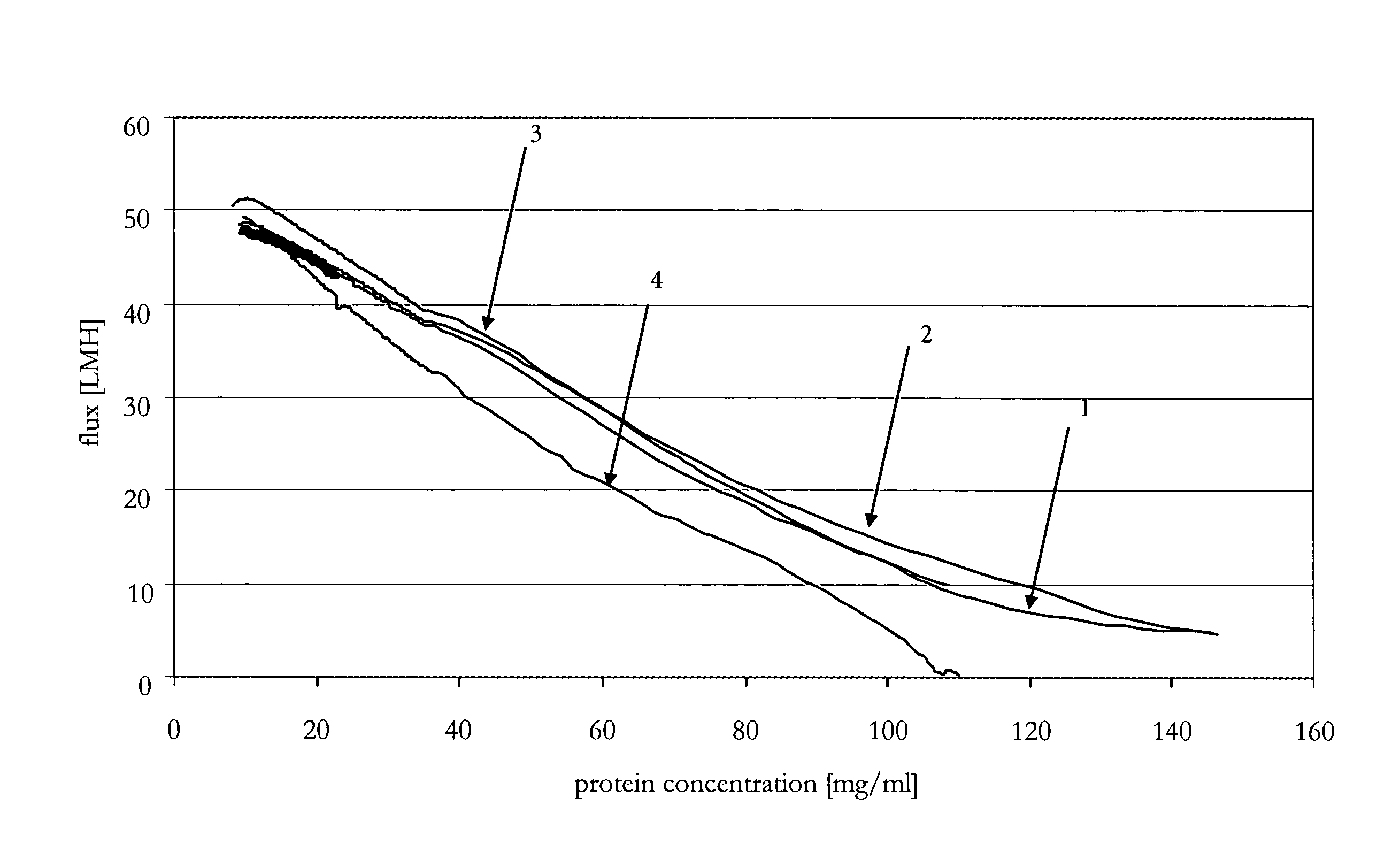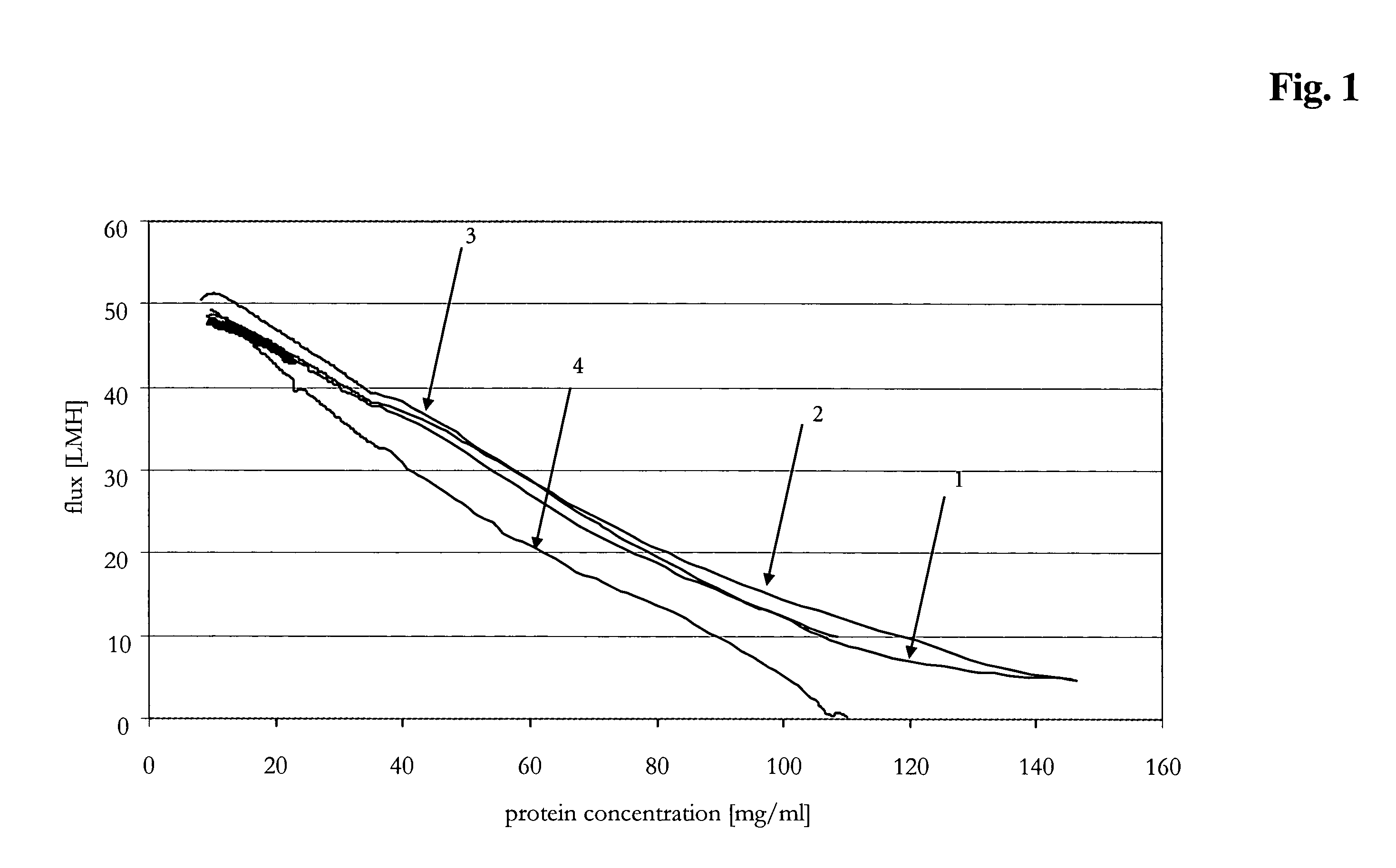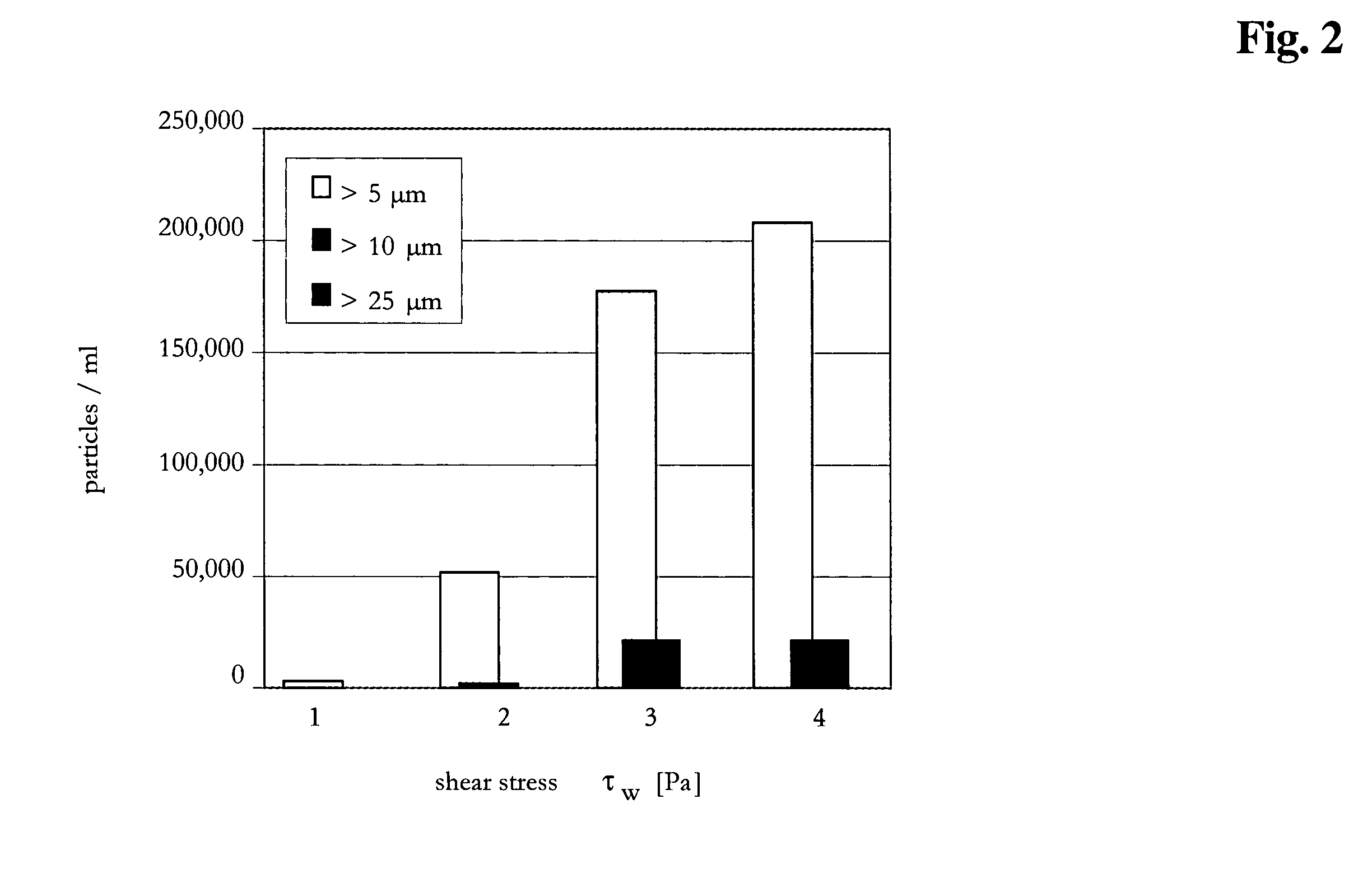Variable tangential flow filtration
- Summary
- Abstract
- Description
- Claims
- Application Information
AI Technical Summary
Benefits of technology
Problems solved by technology
Method used
Image
Examples
example 1
Analytical Methods
a) Turbidity Measurement.
[0082]The photometric absorbance was determined at 350 nm and 550 nm, where no intrinsic chromophores in the antibody solution absorb (UV-VIS spectrophotometer Evolution 500, Thermo Fisher Scientific, Waltham, USA). The samples were measured undiluted. As a reference medium the appropriate buffer solution was used. Every measurement was conducted three times.
b) Size-Exclusion-HPLC.
[0083]The chromatography was conducted with a Tosoh Haas TSK 3000 SWXL column on an ASI-100 HPLC system (Dionex, Idstein, Germany). The elution peaks were monitored at 280 nm by a UV diode array detector (Dionex). After dissolution of the concentrated samples to 1 mg / ml the column was washed with a buffer consisting of 200 mM potassium dihydrogen phosphate and 250 mM potassium chloride pH 7.0 until a stable baseline was achieved. The analyzing runs were performed under isocratic conditions using a flow rate of 0.5 ml / min. over 30 minutes at room temperature. The c...
example 2
Determination of TMP and CF Conditions
[0087]A conditioned and filtered citrate-buffered aqueous solution (pH 5.5) of an anti-IL-IR antibody was concentrated twenty fold up to 100 mg / ml by use of an automated TFF system ÄKTAcrossflow™ (GE Healthcare, Amersham Bioscience AB, Uppsala, Sweden) by employing a scaleable flat sheet cassette (Sartorius, Göttingen, Germany) with a Hydrosart™ membrane of regenerated cellulose, with a nominal molecular weight cut-off of 30 kDa and a membrane area of 0.02 m2. Different concentration programs generated with the UNICORN software controlling ÄKTAcrossflow™ were performed. Total membrane loading was about 400 g / m2.
[0088]Flux and pressure profiles at four preset transmembrane pressures are determined at different immunoglobulin concentrations in the immunoglobulin solution to be concentrated with respect to different cross-flows. The TMP was set to 0.3 bar, 0.5 bar, 0.9 bar, or 2.0 bar. The cross-flows for each TMP and protein concentration were 50 ...
example 3
Comparison of the Variable Method According to the Invention to Constant Methods
[0095]The method according to the invention was compared to different constant parameter methods for the production of a concentrated immunoglobulin solution. The target concentration was set to 90 mg / ml. The tangential flow filtration was performed with the devices according to Example 2. The different parameters of the compared methods (methods 1 to 4 are constant methods, method 5 is the variable method according to the invention) were the following:
Method 1: transmembrane pressure=0.6 bar[0096]cross-flow=90 ml / min[0097]Δp=0.7 bar
Method 2: transmembrane pressure=0.6 bar[0098]Δp=1.2 bar
Method 3: transmembrane pressure=0.6 bar[0099]Δp=1.8 bar
Method 4: transmembrane pressure=0.6 bar[0100]Δp=3.0 bar
Method 5: a) transmembrane pressure=1.5 bar, Δp=0.5 bar,[0101]b) transmembrane pressure=0.85 bar, Δp=1.2 bar,[0102]c) transmembrane pressure=0.85 bar.
[0103]The different parameters and the time required to achi...
PUM
| Property | Measurement | Unit |
|---|---|---|
| Pressure | aaaaa | aaaaa |
| Pressure | aaaaa | aaaaa |
| Pressure | aaaaa | aaaaa |
Abstract
Description
Claims
Application Information
 Login to View More
Login to View More - R&D
- Intellectual Property
- Life Sciences
- Materials
- Tech Scout
- Unparalleled Data Quality
- Higher Quality Content
- 60% Fewer Hallucinations
Browse by: Latest US Patents, China's latest patents, Technical Efficacy Thesaurus, Application Domain, Technology Topic, Popular Technical Reports.
© 2025 PatSnap. All rights reserved.Legal|Privacy policy|Modern Slavery Act Transparency Statement|Sitemap|About US| Contact US: help@patsnap.com



